Top Guns of Bay Area Birding, 2020
By Michael Stevens
Quite a story unfolded on the eBird Top 100 lists for 2020. After many years with the same excellent birders at the top of the heap, newcomers emerged as Champion Birder of the Year in both San Francisco and Alameda Counties. It seemed remarkable because of the combination it takes to get that sort of lofty year list—time, commitment, skill, and experience. How would not one but two rookies emerge who could compete at that level? The short answer is the obvious one: Both Rachel Lawrence and Alex Henry are fine birders who arrived in the Bay Area, separately, toward the end of 2019.
Rachel, the top San Francisco eBirder, was a parasite immunologist and faculty member at the Royal Veterinary College of The University of London who decided to convert a long-distance relationship to a marriage. When the wedding bells finished chiming, she found herself living in Bernal Heights.
Alex, the top Alameda County eBirder, was a recent University of Michigan graduate who achieved the fondest wish of pretty much every recent grad when he landed a job in the East Bay and a place to crash in Berkeley.
[Editor’s Note: Alex will be presenting a Birdathon Virtual Field Trip on “Finding Rarities in the East Bay” on Wednesday evening, April 21st. Click here for details and sign-up for this Zoom event.]
Let’s hear directly from these two.
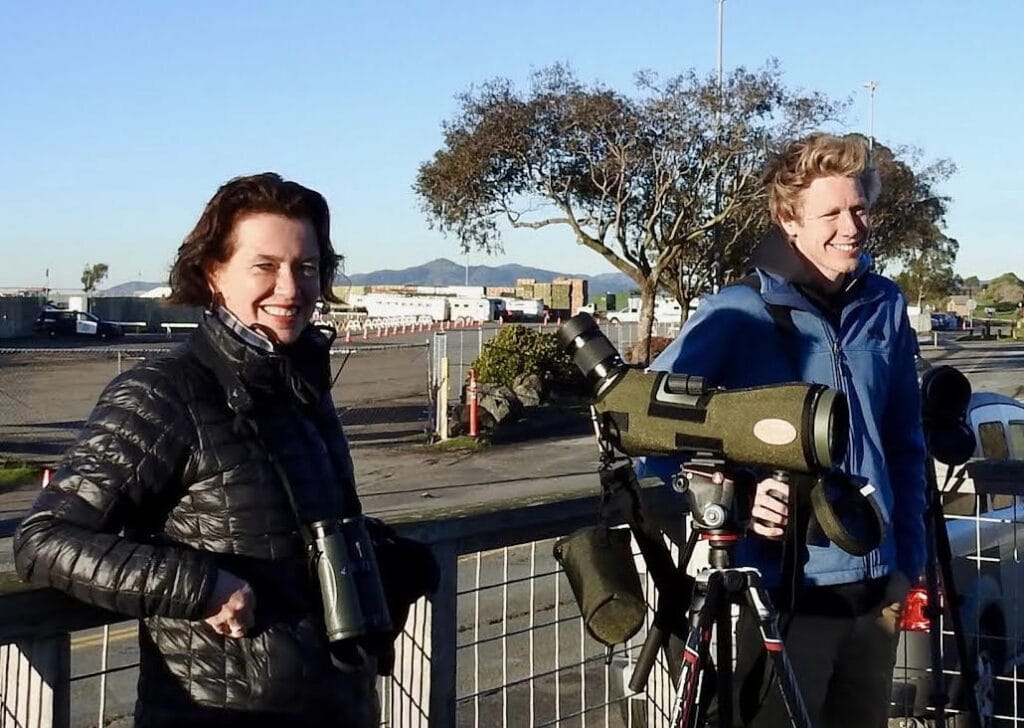
Q: How about a quick origin story – how did you become a birder?
Alex: That’s easy – I was an eight-year-old living outside of Boston when a pair of Broad-winged Hawks built a nest in some nearby woods. Suddenly there were rodent and songbird scraps all over the neighborhood and I was fascinated. My parents really were supportive and pretty soon I was traveling all over Massachusetts looking at birds.
Rachel: I grew up in Dorset on the south coast of England with parents who were sailors, so we were outdoors with binoculars a lot. I have a story like Alex’s – we were a couple of miles offshore when a Peregrine Falcon exploded onto a Black-headed Gull. It took a few moments to settle it in and then turned around and just headed for shore!
Q: Nice, very “circle of life!” Speaking of apex predators… it’s the end of 2019 and you’re new in town. At what point did you realize you were going to totally go nuts in 2020?
Alex: It didn’t take too long, by the end of January I was off to a good start and the idea of an Alameda County Big Year definitely seemed doable. Another thing that helped was that I was from Massachusetts and I was seeing life birds! Once I got started I felt like Alameda County had the east-county birders who occasionally got out to the bay and the bayside birders who got out to Livermore once in a while. I thought I might be able to do both.
Rachel: ‘Yes’ on the new birds thing – that was great. Plus I moved to San Francisco in September 2019 and ended up joint 10th on the 2019 list. So I thought if I could do that in less than half a year (laughing), these people aren’t so tough! I imagined I could end up in the top two or three but when the quarantine started, what was there to do but bird every day?
Q: As you look back on the year, was there a venue or hotspot that was particularly memorable?
Rachel: Battery Godfrey. My first visit was this fall and it was incredible – it requires a unique set of skills. You’re seeing the birds at eye level or from above so you need to know the in-flight field marks, you identify the passerines by sound and flight calls or the formation of the flocks, and the view is one of the most spectacular in the world. It’s also weather-dependent, especially as the fall migration gets started, and it has that mad “line-up on the concrete” atmosphere.
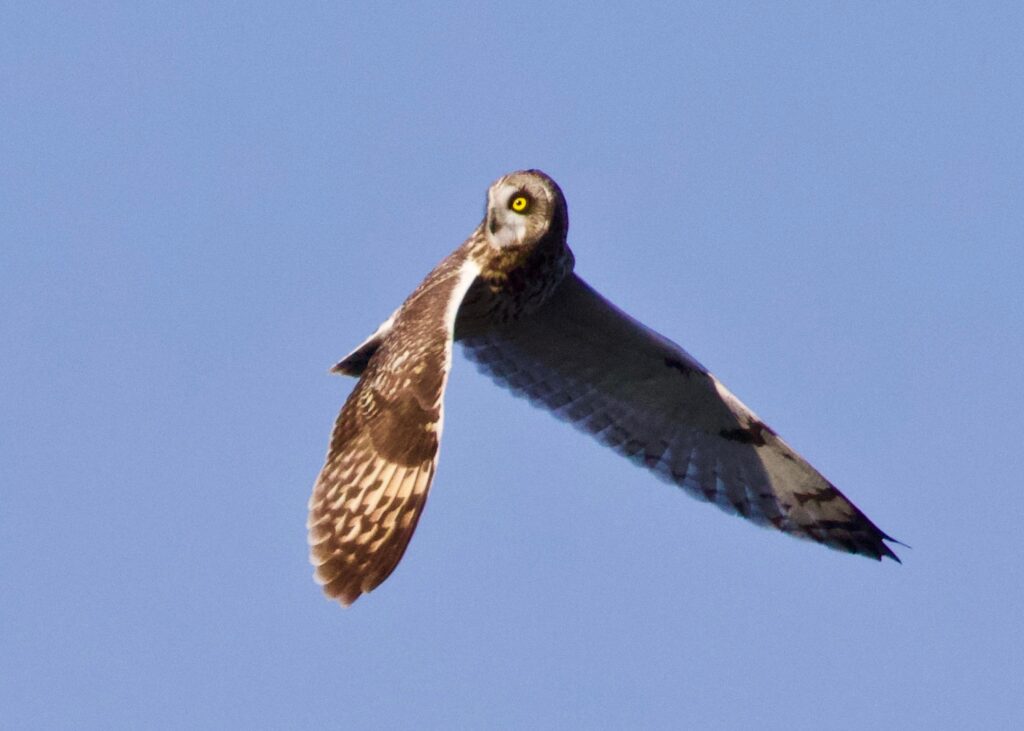
Alex: Mines Road. It’s a bit of the Interior Coastal Range that’s wedged into the Livermore Valley. It’s all fenced private property but you can pull in whenever it looks promising and it can be spectacular. I have been owling out there lately. There are 6 species and I haven’t been able to get them in one outing, but I did run into a mountain lion at dusk – that’s when you’re glad you’re not too far from your car. Mines Rd. transitions into chaparral as you get into Santa Clara County and you can pick up Bell’s Sparrow or Lewis’s Woodpecker, which are very tough in Alameda County.
[Editor’s note: Golden Gate Bird Alliance is hosting a Virtual Field Trip to Mines Road on the evening of Wednesday, April 7th, led by Steve Lombardi. Click here for details and sign-up for this Zoom event.)

Q: I know you saw a lot of birds but can you pick out one from this year that you’ll remember?
Alex: Lesser Black-backed Gull. It was December 30 and I had been by Clifton Court, then swung past Bethany Reservoir looking for Tundra Swan, which I never got. I saw a few gulls around an arm of the Reservoir so I walked over there and it was the mother of all gull flocks, at least 2,000 gulls on the water and…you know, there had to be something! So I dug out the Lesser Black-backed, sent out a bunch of photos before I left and when I got home and started looking I realized there was another one in the picture. It ended up being my last new bird of the year.
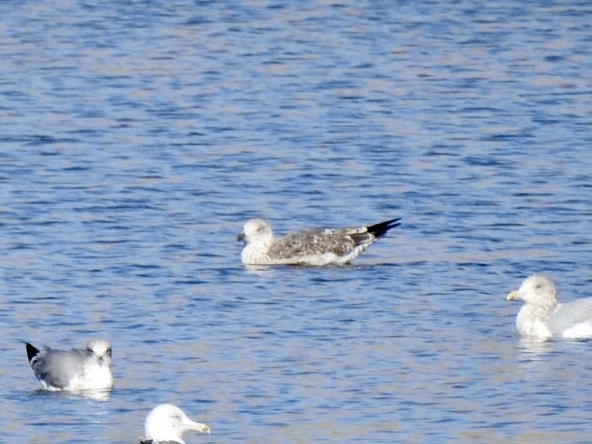
Rachel: I’m also thinking of one from late in December, the Loggerhead Shrike at Yosemite Slough. It’s not a tough ID but it’s such a ferocious bugger and it was the first one seen in San Francisco for 4 or 5 years. The previous one was in the same spot. It was around after the New Year but they just bulldozed the whole area and I haven’t seen it since.
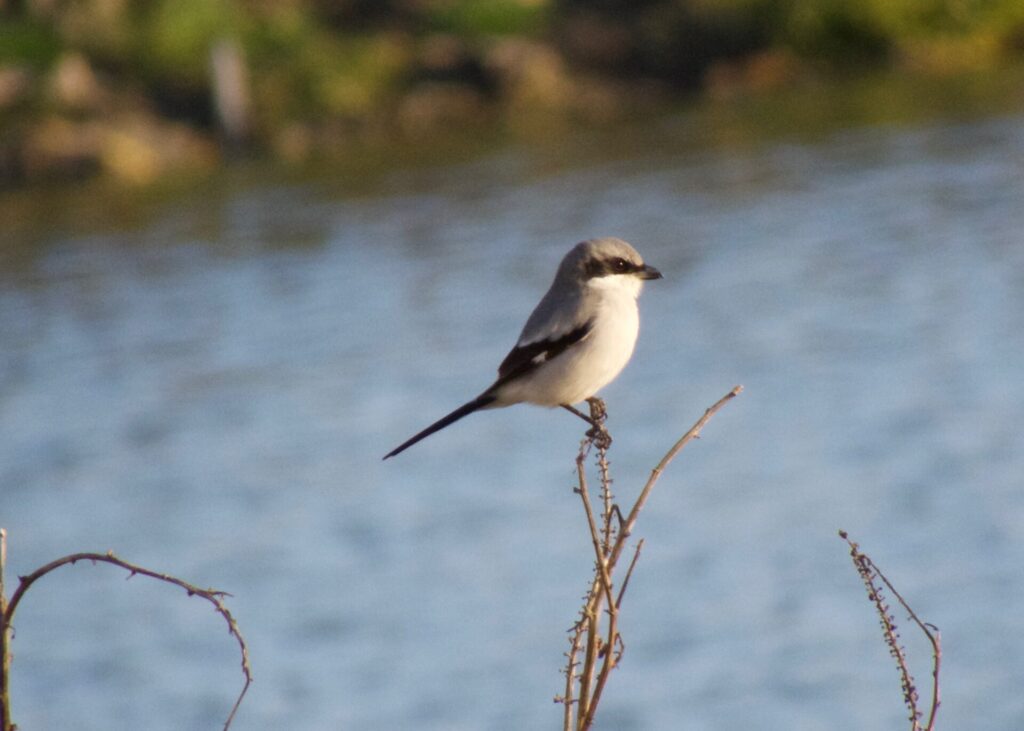
Q: I’m glad you mentioned those two because they both created a lot of excitement and community engagement, which was something else I wanted to get into. You were active on the birding listservs, where you were both so helpful to anyone who wanted to see birds you reported. For instance, based on my own experience it’s not obvious how to bird Yosemite Slough! Do you hop the fence?
Rachel: Yes, that’s a tricky spot. My biggest contribution might have been sharing my parking places.
Q: As the new kid in town, did the documentation and support for other birders feel like an obligation? Rachel, I particularly wanted to note your high quality photos of small birds in heavy foliage. Was that something that you already had in your repertoire or is it something new?
Rachel: I’m a scientist so the whole evidence thing is pretty well baked-in. It did get a bit meta, really: If I didn’t get a photograph, did I really see it? And my photography got better as I did so much.
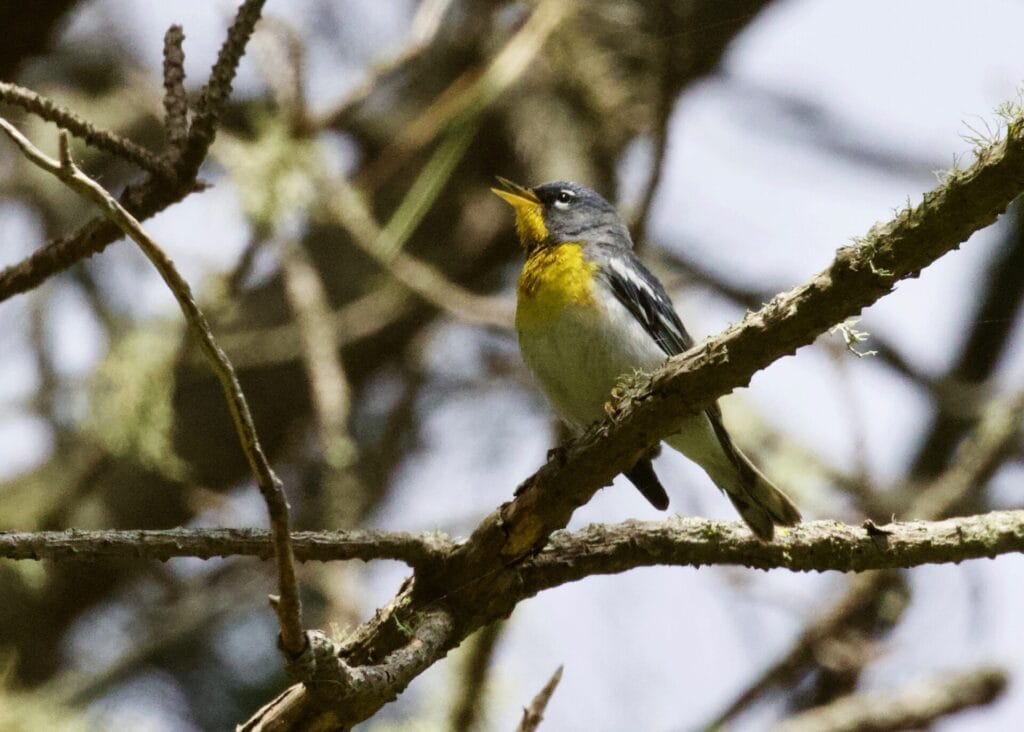
Alex: The documentation ended up being a great part of the year. I’m competitive, maybe a little too competitive, and carefully documenting the locations and details of the hotspots felt like a way to counteract some of the individualism.
Q: How about a takeaway or lesson learned from the big year? Anything you think might stick with you?
Alex: It got so public so quickly, and that created some tension. You know when you first start using eBird you realize other people are reviewing and evaluating your observations, which is not easy to accept, but as people began to recognize my name it was even more so. I identified what was probably just a female Anna’s Hummingbird as a Costa’s this spring and…it makes you realize how much you don’t know. I really came to admire the older birders who have a lifetime of experience in the field.
Rachel: I want to get back to the documentation thing. I was going to say I often felt that as a woman I had to do more documentation and include more pictures because the lads aren’t wired to take my word for it. That’s not right either—we can’t just go along with the idea that a woman is required to meet a higher standard—but it’s a problem.
On the other hand, it was quite a year for women in San Francisco. We had Erica Harris rocketing up the Top 100 list to No. 6. I did a lot of birding with Yvette McDonald and Dawn Lemoine, and spent several mornings in Golden Gate Park with Nancy Palmer who was finding rarities at Stow Lake every day in the fall. We concluded that in San Francisco it was the Year of the Lady Birder.
Epilogue
Rachel Lawrence listed 277 San Francisco County species on eBird in 2020, a record. Of these, 273 are on the official California Bird list, tying an ad hoc county record kept by a group of San Francisco birders.
Alex Henry listed 284 Alameda County species in 2020. While there are no unofficial record keepers in Alameda County, this appears to be about 10 more than any previous Alameda big year. Alex has opted out of the eBird Top 100 rankings, which means his 2020 record is no longer displayed on the eBird web site.
The real reason I pitched this article was that I thought it might end up with me going birding with Rachel and Alex, who are both superb birders and lovely people. It worked out: see ebird.org/checklist/S80425280.
—————————————
Michael Stevens is a GGBA member and recently retired from the California College of the Arts. He is currently birding full time but anticipates tending to his other responsibilities at some future point.
